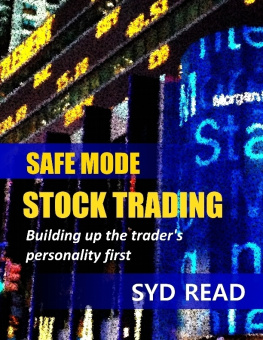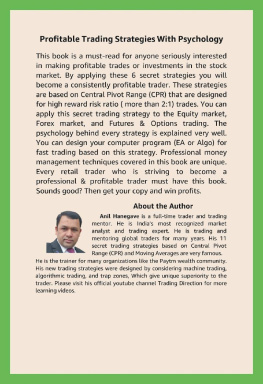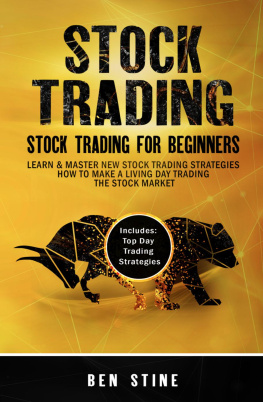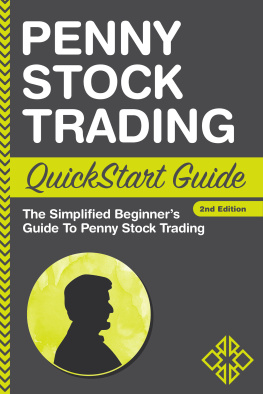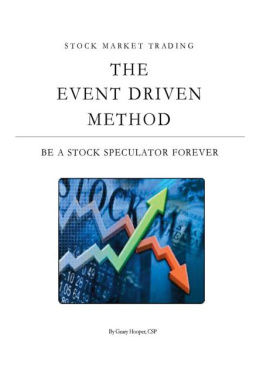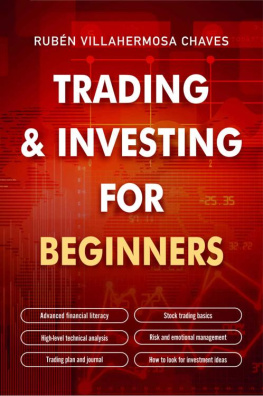Read - Safe Mode Stock Trading
Here you can read online Read - Safe Mode Stock Trading full text of the book (entire story) in english for free. Download pdf and epub, get meaning, cover and reviews about this ebook. year: 2017, publisher: Lulu.com, genre: Business. Description of the work, (preface) as well as reviews are available. Best literature library LitArk.com created for fans of good reading and offers a wide selection of genres:
Romance novel
Science fiction
Adventure
Detective
Science
History
Home and family
Prose
Art
Politics
Computer
Non-fiction
Religion
Business
Children
Humor
Choose a favorite category and find really read worthwhile books. Enjoy immersion in the world of imagination, feel the emotions of the characters or learn something new for yourself, make an fascinating discovery.
Safe Mode Stock Trading: summary, description and annotation
We offer to read an annotation, description, summary or preface (depends on what the author of the book "Safe Mode Stock Trading" wrote himself). If you haven't found the necessary information about the book — write in the comments, we will try to find it.
Read: author's other books
Who wrote Safe Mode Stock Trading? Find out the surname, the name of the author of the book and a list of all author's works by series.
Safe Mode Stock Trading — read online for free the complete book (whole text) full work
Below is the text of the book, divided by pages. System saving the place of the last page read, allows you to conveniently read the book "Safe Mode Stock Trading" online for free, without having to search again every time where you left off. Put a bookmark, and you can go to the page where you finished reading at any time.
Font size:
Interval:
Bookmark:
One good thing to do during this preparation phase is to practice trading but not in real. This means that you will be trading stocks without using money, just for the sake of practicing only. All you have to do is to pick a stock you've chosen for some certain reason and imagine that you are buying a certain number of shares in that stock at today's market price and watch for moves the price makes over time (days, weeks, ... etc) then liquidate (sell) your position when you feel it is time to, and calculate your profit / loss. You can make your game more advanced by limiting yourself to a certain amount of money as your initial investment and work according to it. You can also train yourself to sub-allocate your investment, by buying shares of ABC Company with 20% of your investment then proceed to buy XYZ Company with 30% of your investment and so on.
This game is very useful for several reasons:
- You are not investing real money here, so you are not exposed to real money losses.
- It improves your market sense.
- It will help you in training yourself how to work within limits (i.e. your principal investment), thus will teach you how to manage it more properly.
- It will help you to test if the knowledge you have gained and the information you have collected had resulted in good decisions.
- This might continue in the future, even if you are really started to trade stocks. This is helpful to test your sense about new stocks that you still don't want to risk your money with.
Once you have established your own standards, which need to be reasonable and acceptable to you, you will need to get disciplined to them. Always have a self-discipline attitude and always refer back to your standards. Do not get tempted with others' opinions and behaviors. Several thoughts and information might affect your judgment and drive you away from your standards, thus, away from the plan you have put for yourself.
Your standards should be viewed as the control mechanism that would enable you to achieve your goal, which is to maximize your capital in a safe way. Staying disciplined means that you are still on the right track that you have designed at the beginning, any early deviation means that you have started to roam.
Standards should be looked at easily and should not be complicated. For example you can set a minimum acceptable monthly return, which should be higher than interests and other returns on other substitute investments. If you had attained this goal one day then you can liquidate your shares and enjoy what you got. Why not, since this was your goal from the start? It is safer to get them in hand rather to risk them for a longer period.
You can set a standard for a way-out, a limit for a stop loss (say 5%, for example). You should accept loss the same way you accept profit. But in order to minimize your losses you will need a stop loss standard. Keeping this in mind will keep you away from further losses, because if a share's price trend moved against you how can you tell when the trend is going to stop and reverse back. Just accept the minimum loss, it is definitely better than a maximum loss, a minimum loss can be recovered easily from other profits, but it will take you longer time to recover a huge loss.
Having standards means you have them to be followed. Do not get tempted when you find a new method. Trial and error should be minimized in such investment, because it will cost you money. For example if you are thinking of breakeven as a way-out of a stock (i.e. to buy some additional lots of a certain down-trending stock at lower prices to breakeven later), remember that the risk is increasing, flexibility are decreasing and you will be locking yourself for a longer period of time. So why should you risk more?
Staying strict to your standards will always give you more flexibility. With a stop loss limit you can get out of a position faster, this means that you have saved your time, and you will recover the realized minor stop loss faster. Think also of the opportunities that you will miss if you kept holding your losing position.
You can always read about or listen to the stories of others success. This will help you make use of others experiences and follow them. But this should not be your main concern; you should be interested in losers experiences to avoid the mistakes they made, as well.
Stock trading is not a one way direction of success and profit-making. For individuals with limited financial resources, success will still be limited. You cannot make a million dollars out of a small amount of money within a limited period of time. If you heard of someone who could achieve this (given this was true!), you should not consider him / her as the rule, and to make his / her achievement as your target. Because, millions of people are conducting this business and only few are making tremendous money out of it. I am not trying to say here that success is very limited or narrow, on the contrary the market is full of big opportunities, what I am trying to say is that you should not make such rare stories become the rule and ignore the real situation with its facts. Do not be overwhelmed with success and always keep your feet on the ground.
The stories of success are more attractive than the stories of failure; matter of fact, they are what brought you to this type of investment. But always remember that there is another side of the story. Since there is success here, there is failure somewhere else, and where there is a winner there might be a loser.
The stories of failure are more important than the stories of success. We have agreed that we need to preserve the initial capital first. By avoiding the failures others had done you will save yourself the possibility of having similar hits, it is safer. Keep in mind that such experiences are less available to learn from than success stories, because people are either searching only for what satisfies their desires or avoid talking about their failures (sometimes it is embarrassing for people to say that they did mistakes and failed). That's why failure experiences are less available, and this what makes them more important to look for and to learn from, to avoid getting into similar paths in the future.
"Human beings, who are almost unique in having the ability to learn from the experience of others, are also remarkable for their apparent disinclination to do so." - Douglas Adams (1952 2001) British comic radio dramatist and author
Always remember that you are dealing with money, your own money, your savings, the money that you have worked hard to earn, or the money you will work hard to get in case if you have a loan to settle. For all scenarios, it is something valuable that you need to protect (in the first place) and maximize. This might be forgotten due to the easiness of conducting this business, which might make trading looks like playing a computer game. In a computer game you can risk the score and the chances, but what if the chances you have are made up of your own money, would you risk it the same way?
Performance of this project is measured by money. You invested money and you expect to receive more money. The question that arises is "How can I judge that my performance is good?" The answer is "Percentages".
Do not wait for a one full dollar difference between buy and sell prices to get out of a stock, or to consider such figure as your standard. This will limit your way of thinking and affect your judgment. The best way is to establish a percentage, a rate of return defined by you, if current return meets this percentage then it is time to get out and liquidate your shares, and you'd better stick yourself to this. The percentage you choose is something personal, it should be reasonable, and better than other financial instruments' rates of return. For example, if interest rate for deposits is 2% then a 5% return on stocks is considered to be very good, given the stocks' level of risk your capital is exposed to. It is a risk / return equation.
Font size:
Interval:
Bookmark:
Similar books «Safe Mode Stock Trading»
Look at similar books to Safe Mode Stock Trading. We have selected literature similar in name and meaning in the hope of providing readers with more options to find new, interesting, not yet read works.
Discussion, reviews of the book Safe Mode Stock Trading and just readers' own opinions. Leave your comments, write what you think about the work, its meaning or the main characters. Specify what exactly you liked and what you didn't like, and why you think so.

